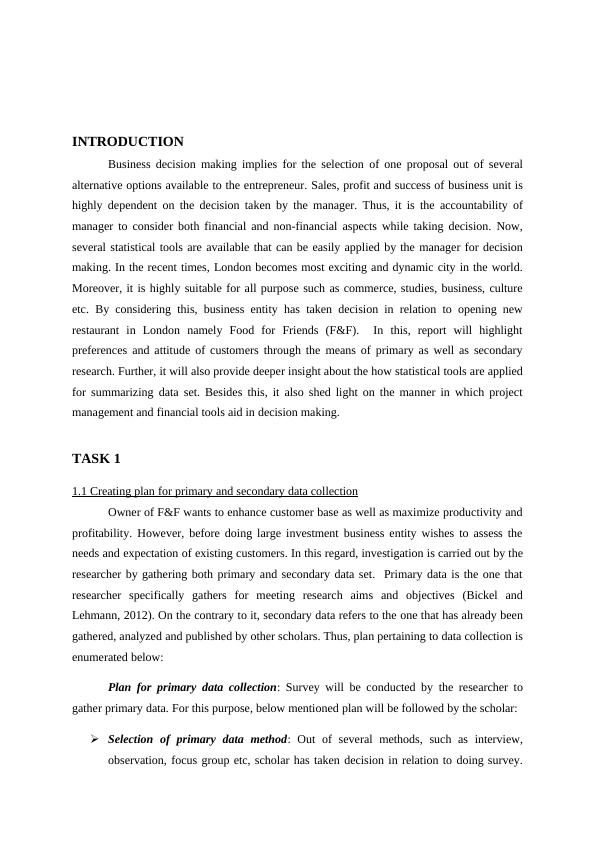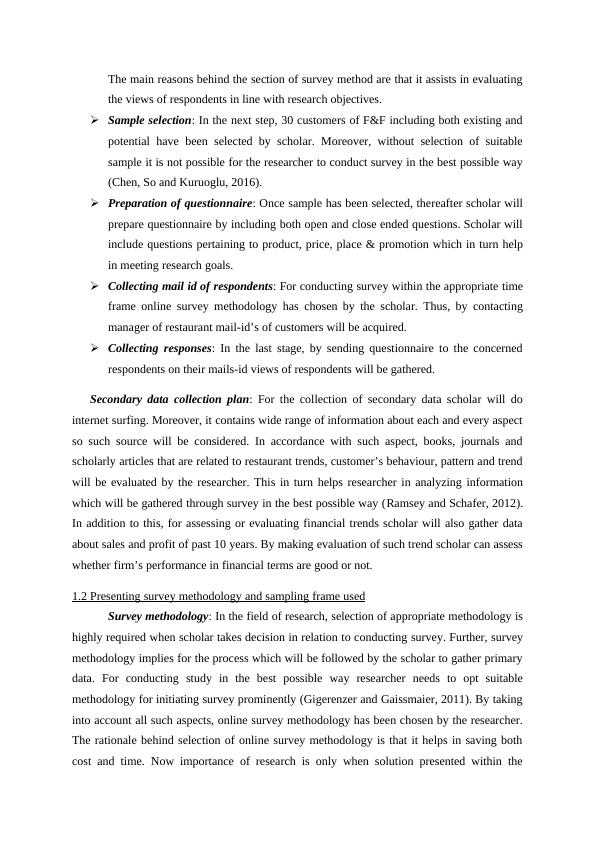Business Decision Making TABLE OF CONTENTS INTRODUCTION
Create a plan for the collection of primary and secondary data, design a questionnaire, analyze data using various techniques, and draw valid conclusions in a business context.
16 Pages3871 Words322 Views
Added on 2020-06-05
About This Document
Business Decision Making TABLE OF CONTENTS INTRODUCTION 1 TASK 1 1 1.1 Creating plan for primary and secondary data collection 1 1.2 Presenting survey methodology and sampling frame used 2 1.3 Designing questionnaire for survey purpose 3 2.1 Creating information for decision making by summarizing data set 5 2.2 Analyzing results to draw valid conclusion 6 2.3 Summarizing data through using measures of dispersion 7 2.4 Explaining quartile, percentile and correlation co-efficient 8 3.1 Producing graph using spreadsheet 9 3.2 Creating trend lines in spreadsheet graphs 9 3.3
Business Decision Making TABLE OF CONTENTS INTRODUCTION
Create a plan for the collection of primary and secondary data, design a questionnaire, analyze data using various techniques, and draw valid conclusions in a business context.
Added on 2020-06-05
ShareRelated Documents
End of preview
Want to access all the pages? Upload your documents or become a member.
Evaluation of Investment Proposals
|23
|5030
|79
Planning and preparation of primary and secondary data for BDM INTRODUCTION 3
|17
|3471
|455
Business Decision Making in Organisation - Report
|19
|3946
|31
Use of Statistical Tools in Decision Making : Report
|18
|3863
|58
Business Decision Making INTRODUCTION 1 TASK 1 1.1 Designing methodology for the collection of data
|25
|4293
|353
Table of Contents for Business Decision Making
|19
|3993
|361




